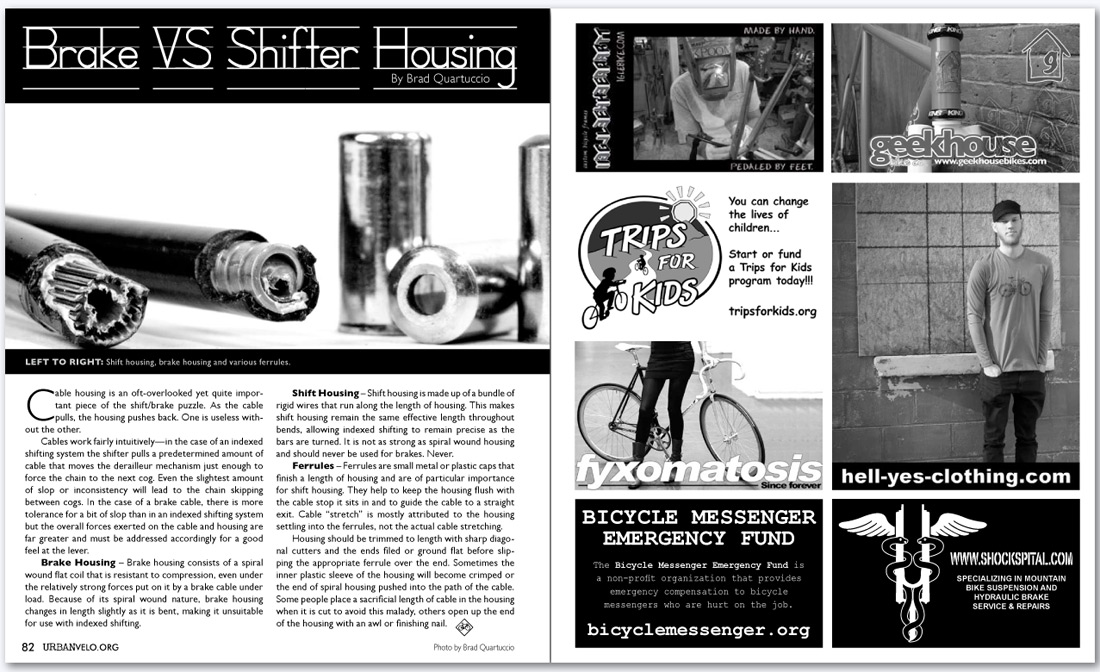by Brad Quartuccio


|
|||
Brake VS Shifter Housingby Brad Quartuccio Cable housing is an oft-overlooked yet quite important piece of the shift/brake puzzle. As the cable pulls, the housing pushes back. One is useless without the other. Cables work fairly intuitively—in the case of an indexed shifting system the shifter pulls a predetermined amount of cable that moves the derailleur mechanism just enough to force the chain to the next cog. Even the slightest amount of slop or inconsistency will lead to the chain skipping between cogs. In the case of a brake cable, there is more tolerance for a bit of slop than in an indexed shifting system but the overall forces exerted on the cable and housing are far greater and must be addressed accordingly for a good feel at the lever. Shift Housing – Shift housing is made up of a bundle of rigid wires that run along the length of housing. This makes shift housing remain the same effective length throughout bends, allowing indexed shifting to remain precise as the bars are turned. It is not as strong as spiral wound housing and should never be used for brakes. Never. Ferrules – Ferrules are small metal or plastic caps that finish a length of housing and are of particular importance for shift housing. They help to keep the housing flush with the cable stop it sits in and to guide the cable to a straight exit. Cable “stretch” is mostly attributed to the housing settling into the ferrules, not the actual cable stretching. Housing should be trimmed to length with sharp diagonal cutters and the ends filed or ground flat before slipping the appropriate ferrule over the end. Sometimes the inner plastic sleeve of the housing will become crimped or the end of spiral housing pushed into the path of the cable. Some people place a sacrificial length of cable in the housing when it is cut to avoid this malady, others open up the end of the housing with an awl or finishing nail.
|
|
|